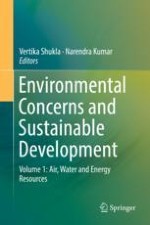2020 | OriginalPaper | Chapter
3. Use of Lichens in Biological Monitoring of Air Quality
Author : Gülşah Çobanoğlu Özyiğitoğlu
Published in: Environmental Concerns and Sustainable Development
Publisher: Springer Singapore
Activate our intelligent search to find suitable subject content or patents.
Select sections of text to find matching patents with Artificial Intelligence. powered by
Select sections of text to find additional relevant content using AI-assisted search. powered by
